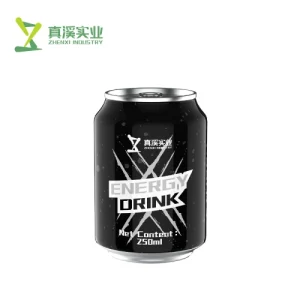Want a quick buzz on the move- Energy drinks are great, though they also have questions about their safety surrounding them. So, what are they made of and how do they work?
Caffeine is the main ingredient in most energy drinks, and it increases alertness and focus. Caffeine levels are across the board, reaching up to 300 mg per serving vs. just a mere 95 in a standard cup of coffee For most people, the FDA says that up to 400 mg a day of caffeine is not generally associated with negative health effects. However, the excessive intake of this product can produce side effects including insomnia, nervousness and tachycardia.
Sugar is an additional widespread ingredient; some energy drinks comprise up to 30 grams of sugar for every 8 oz. Consuming too much sugar can lead to weight gain, type 2 diabetes and dental cavities. The American Heart Association sets a daily limit at 25 grams for women and 36 grams of sugar per day, so if you consume such energy drinks quite regularly it becomes very difficult to control your total sugar consumption.
You might have heard of Taurine, which is an amino acid often found in energy drinks that play a role in many physiological functions like bile salt formation and cardiovascular health. Taurine is likely safe at the doses found in energy drinks, but there have been no long-term studies to provide a more definitive answer. For now, a 2018 Journal of the American College of Cardiology review called for additional study regarding taurine's implications during extended periods and high doses.
Furthermore, they contain B vitamins which help foster energy conversion and proper physiological functioning. One of these is vitamin B12, which supports red blood cell formation and neurological function. B vitamins are generally safe, but an excess can cause unpleasant side-effects from supplements or fortified foods. The National Institutes of Health points to nerve damage from high doses of vitamin B6, as an example.
When these ingredients are combined (especially caffeine and sugar), they essentially exasperate each other. Teens who used energy drinks had higher levels of hyperactivity, inattention and impulsivity at baseline, but not significantly so over time; future research is needed to discern the nature of these associations. [Journal Pediatrics 2015] This finding highlights the need for these populations to limit their consumption, particularly children.

Sounds about right… 🙂Marketing campaigns often play off of this demographic, by using endorsements from athletes and celebrities. Unfortunately this can also lead to an image that might be glamorised of energy drinks and required for your edge. The American Academy of Pediatrics, though recently issued a report noting that kids and teens shouldn't drink energy drinks because their caffeine could cause accidental overuse.effects.
Moreover, the consumption of energy drinks has found to be associated with some health risks as well. A 2019 study published in the Journal of the American Heart reported that drinking 32 ounces of energy drink within an hour measurably spiked blood pressure and upped electrical disturbances inside healthy hearts. High doses over short periods of time may be associated with an increased risk for heart disease, particularly among those already at a high likelihood.
These worries notwithstanding, a modest intake of energy beverages is fine as long as it is part of a healthy diet for an otherwise-healthy adult. The trick is to just know the limits how much caffeine and sugar you should take. Below are some key points when it comes to energy drinks, read those labels and know what the ingredients mean.
In the end, energy drinks safety is upto your own habits and health condition. Consuming it in moderation and with caution to reduce risks by quantity or frequency of intake along side other sources caffeine/sugar from the diet. Read more on Energy Drink Ingredients Here >> Energy Drinks & Their Components
